Oak Park River Forest High School
Class Of 1963
Notable OPRF Homes
.jpg) |
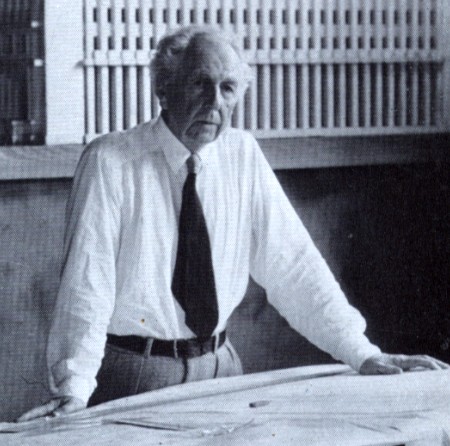 |
Frank Lloyd Wright (born Frank Lincoln Wright, June 8, 1867 – April 9, 1959) was an American architect, interior designer, writer and educator, who designed more than 1,000 structures and completed 500 works. Wright believed in designing structures which were in harmony with humanity and its environment, a philosophy he called organic architecture. This philosophy was best exemplified by his design for Fallingwater (1935), which has been called "the best all-time work of American architecture". Wright was a leader of the Prairie School movement of architecture and developed the concept of the Usonian home, his unique vision for urban planning in the United States. His work includes original and innovative examples of many different building types, including offices, churches, schools, skyscrapers, hotels, and museums. Wright also designed many of the interior elements of his buildings, such as the furniture andstained glass. Wright authored 20 books and many articles and was a popular lecturer in the United States and in Europe. His colorful personal life often made headlines, most notably for the 1914 fire and murders at his Taliesin studio. Already well known during his lifetime, Wright was recognized in 1991 by the American Institute of Architects as "the greatest American architect of all time."
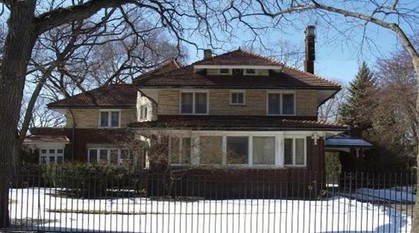 |
.jpg) |
Percy Lavon Julian (April 11, 1899 – April 19, 1975) was an American research chemist and a pioneer in the chemical synthesis of medicinal drugs from plants. He was the first to synthesize the natural product physostigmine; and was a pioneer in the industrial large-scale chemical synthesis of the human hormones, steroids, progesterone, and testosterone, from plant sterols such as stigmasterol and sitosterol. His work would lay the foundation for the steroid drug industry's production of cortisone, other corticosteroids, and birth control pills. He later started his own company to synthesize steroid intermediates from the Mexican wild yam. His work helped reduce the cost of steroid intermediates to large multinational pharmaceutical companies. During his lifetime he received more than 130 chemical patents. Julian was one of the first African Americans to receive a doctorate in chemistry. He was the first African-American chemist inducted into the National Academy of Sciences, and the second African-American scientist inducted from any field.
Percy Julian was born in Montgomery, Alabama as the first child of six born to James Sumner Julian and Elizabeth Lena (Adams) Julian. James, like his wife, a graduate of what was to be Alabama State University was employed as a clerk in the Railway Service of the United States Post Office, and his father was a slave. Elizabeth worked as a school teacher. Percy Julian grew up in the time of Jim Crow. Among his childhood memories was finding a lynched man hung from a tree while walking in the woods near his home. While it was generally unheard of for African Americans at the time to pursue an education beyond the 8th grade, Julian's parents steered all of their children toward higher education. Around 1950 Julian moved his family from Chicago to the village of Oak Park, Illinois, where the Julians were the first African-American family. Although some residents welcomed them into the community, there was also opposition by some. Their home was fire-bombed on Thanksgiving Day, 1950, before they moved in. After the Julians had moved to Oak Park, the house was attacked with dynamite on June 12, 1951. The attacks galvanized the community and a community group was formed to support the Julians. Julian's son later recounted that during these times, he and his father often kept watch over the family's property by sitting in a tree with a shotgun.
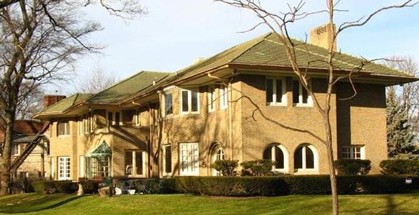 |
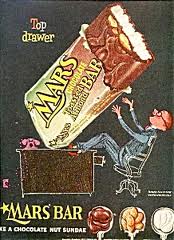 |
Franklin Clarence Mars (September 24, 1883 – April 8, 1934), sometimes known as Frank C. Mars, was an American business magnate who founded the food company Mars, Incorporated, which makes mostly chocolate candy. Mars and his son Forrest Edward Mars developed M&M's. He was born in 1883 in Hancock, Minnesota. Frank Mars learned how to hand dip chocolate candy as a child from his mother Alva, who hoped to entertain him as he had a mild case of polio. He began to sell Molasses chips at age 19. Mars and Ethel G. Kissack (September 29, 1882 – April 11, 1980), a schoolteacher, were married in 1902. Their son, Forrest Mars, Sr. was born in 1904 in Wadena, Minnesota. Later divorced from his first wife, Mars and Ethel Veronica Healy (1884–1945) were married in 1910. (Guess he liked the name Ethel.) That year he began to sell candy wholesale in Tacoma, Washington. In 1920, they moved to Minneapolis, Minnesota, where Mars founded Mar-O-Bar Co. and began to manufacture chocolate candy bars. The company later incorporated as Mars, Incorporated. In 1923 he introduced his son Forrest's idea, the Milky Way, which became the best-selling candy bar Mars moved to Chicago in 1929 and settled in River Forest, Illinois. He became an honorary captain of the Oak Park, Illinois police department.
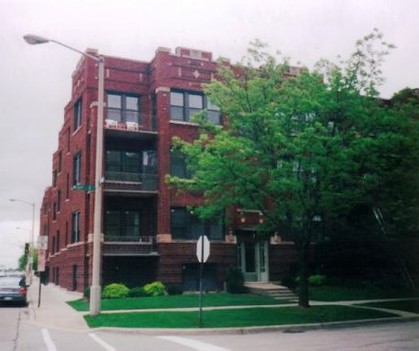 |
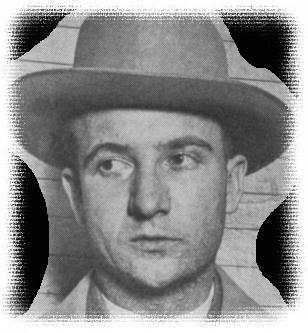 |
William Jack "Three Fingers" White (1900-January 23, 1934) was a Prohibition gangster and member of the Chicago Outfit. His nickname was related to a childhood accident after a falling brick from a construction site had crushed his right hand, resulting in the loss of two fingers. Self conscious of his deformed hand, White would wear a white glove in public with cotton stuffed in the empty fingers. In 1919, he was convicted of robbery and served a prison sentence in Joliet Correctional Center until winning parole within four years. An early member and much respected gunman of Johnny Torrio-Al Capone organization, White would be declared a public enemy in the Chicago Crime Commission's first published report in 1923 of those "who are constantly in conflict with the law" along with James "Mad Bomber" Belcastro, Edward O'Donnell,Jake Guzik, and Al Capone. The following year, White was twice convicted for the murder of Forest Park policeman Edward Pflaume and, despite being released on appeal by the State Supreme Court; he was imprisoned for several years. Following his release, White returned to work for the Chicago Outfit as a labor racketeer competing against rival mobster Roger Touhy(eventually planning the murder of Touhy supporter Teamsters International Vice PresidentPaddy Barrel). In 1933, White and Frankie Rio were supposedly sent to Florida by Paul Ricca to oversee the assassination of Anton Cermak, appearing with Franklin Roosevelt, by Giuseppe Zangara. However, they were held in custody and searched by Chicago police while waiting with politician Harry Hockstein in the main terminal of a Chicago train station on February 13. According to the testimony of Roger Touhy to the Illinois Parole Board in 1957, White and Rio began shooting at Zangara however hit several bystanders instead before disappearing into the crowd dressed in police uniforms of the Cicero Police Department. In May 1933, he was convicted on weapons charges and served a year in jail as well as issued a $300 fine although an appeal was later taken.
His body was found in his Oak Park apartment, suffering gunshot wounds to the head and body, after a gunfight with two unidentified gunmen seen fleeing from the building on the night of January 3, 1934. He would later be portrayed by Gavin MacLeod as "Three Fingers
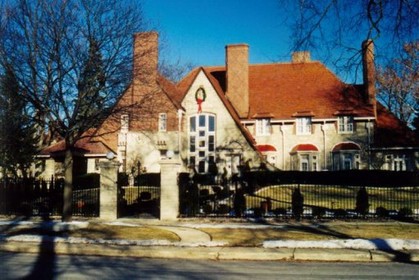 |
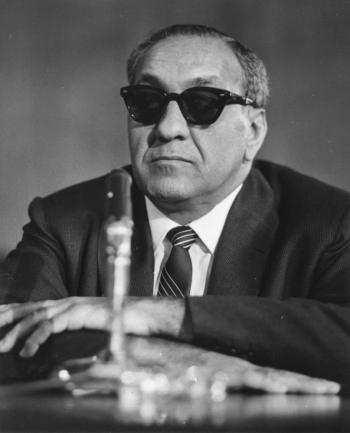 |
Anthony “Joe Batters” Accardo was born in Chicago’s Little Sicily on April 28, 1906. At the age of five he enrolled in grade school, but by the time Accardo was 14 he’d become disenchanted with the education system. So had his parents, who, like many others of that era, filed a delayed birth-record affidavit, stating that their son had actually been born in 1904. The additional two years allowed Tony to drop out of school and begin working. Accardo had several minor brushes with the law in his youth — among them a 1922 arrest for a motor-vehicle violation and a 1923 charge in conjunction with an incident at a pool hall where organized-crime figures were known to hang out — but he never spent a single night in jail. Around this time the teenage Accardo joined the Circus Café Gang, named for its headquarters, the Circus Café on North Avenue. Among his fellow gang members was James Vincenzo De Mora, also known as Vincent Gibardi. De Mora would later make his mark as Machine Gun Jack McGurn. Under that name he became one of Al Capone’s most trusted hit men and was the reputed planner of the 1929 St. Valentine’s Day Massacre.
By 1926, the Capone organization was expanding rapidly and Big Al needed more soldiers for his army. McGurn, having experienced Accardo’s criminal abilities first hand as a member of the Circus Café Gang, recommended his friend to Capone as a possible recruit. Tony had already participated in nearly every racket and was a prime candidate for advancement. So it was that Accardo graduated from the street gangs of Chicago to Scar Face Al’s powerful Outfit. He was brought before Capone at the Metropole Hotel on Michigan Avenue and, grasping the hand of his sponsor, Machine Gun Jack, swore the oath of Omerta. Having taken the mob’s vow of silence, the 20-year-old Accardo became a made man in the Chicago Outfit. Tony was one of Capone’s bodyguards on September 20, 1926, when eleven cars occupied by members of Bugs Moran’s rival North Side Gang attacked Capone’s Cicero headquarters, the Hawthorne Inn. Thousands of machine-gun rounds poured into the building. As soon as the bullets started to fly, Accardo pulled Al to the floor and lay on top of him to shield his boss from the onslaught. At the conclusion of the assault a couple of bystanders and several minor gangsters had been wounded, but miraculously, no one was killed. Tony’s actions that day earned him a position as one of Capone’s regular protectors, and he soon began taking on more important assignments for the Outfit. He allegedly earned his nickname by smashing the skulls of two men with a baseball bat; when Jack McGurn told Capone about the beating, the boss was impressed and said, “This boy is a real Joe Batters.” The name stuck, and from that point on Tony was known as Joe Batters to his criminal colleagues. Accardo also worked closely with Capone’s other top assassins; McGurn, Albert Anselmi, and John Scalise. It’s believed the four went to New York City in 1928 to kill Capone’s friend-turned-enemy, Frankie Yale, who was gunned down in Brooklyn. It marked the first time a Thompson submachine gun was used in a gang-related hit in the Big Apple. Accardo continued to do the heavy work into the '30s. When the Chicago Crime Commission released its first “Public Enemies” list in 1931, Tony came in at number seven.
After Capone went to prison in 1931 for income-tax evasion, Joe Batters moved on to do the bidding of Al’s successor, Frank Nitti. In 1933, the new boss appointed Accardo as capo (captain) of a street crew, in command of a dozen or so soldiers. The promotion made Tony one of the top twelve members of the Chicago Mob. In the early1940s, Accardo’s career took another giant step forward when many of his superiors were implicated in what was known as the Hollywood Extortion Case. As the men above them went to jail, Tony and others moved up the ladder. Eventually, two gangsters were in contention for the top spot: Tony Accardo and Dago Lawrence Mangano. Before the issue could be settled by a vote, the unfortunate Mangano was murdered. Unidentified assailants in a passing car fired shotguns and .45 pistols at him, riddling his body with more than 200 shotgun pellets and five 45-caliber bullets. With his competition gone, Accardo became the number-one man in the Chicago Outfit in 1945. In 1946, Accardo’s people approached James Ragan, the owner of the Continental Press wire service that provided racing results to bookies, and offered to buy him out. It was an offer Ragan felt he could refuse, and he turned them down. To people with Accardo’s mindset, that was bad enough. But Ragan compounded his sin by bringing the Outfit’s proposal to the attention of law enforcement. Shortly thereafter he was gunned down on State Street in Chicago, and then poisoned while recovering in the hospital. Ragan’s body had barely assumed room temperature before the Outfit had control of Continental Press. In 1950, the crime commission officially recognized Accardo as the boss of Chicago’s crime syndicate. However, his reign was cut short in 1957 when an IRS investigation forced him to step down and turn control of the Outfit over to Sam Giancana. At Giancana’s request, Tony agreed to stay on in an advisory capacity. Most law enforcement personnel believe that Accardo was actually the brains behind the Outfit for the next several years, keeping a low profile behind a series of “bosses.”
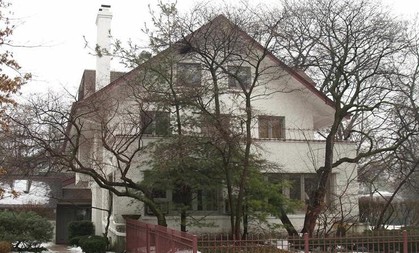 |
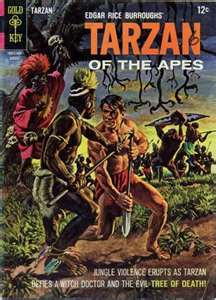 |
Captain George Tyler Burroughs of the Union Army married Mary Evaline Zieger on February 23, 1863. After the war, George and Mary Evaline move to Chicago in Fall, 1868, where George is successful in the distillery business and becomes very involved in political, civic, and social affairs. Edgar Rice Burroughs was born to the couple on February 23, 1875. In his late teens, Edgar spent part of the year working on his brother's cattle ranch (the Bar Y) along the lower Raft River in Cassia County, southeastern Idaho. Edgar's high school experiences included a period of study at Phillips Academy, Andover, Massachusetts and later the Michigan Military Academy at Orchard Lake. His time at the Michigan Academy included many adventures - quarterback of the Prep School Team of the West, 1894; escape from barracks (desertion!) in 1893; he had his own "fiery cavalry horse", "Captain", on whom he won second prize in exhibition drills. In 1893, Edgar drove the first automobile in Chicago, thanks to his father's new occupation as owner of the American Battery Company. In May, 1896, Cadet Burroughs resigned from the Academy to enlist in the US Army, and was stationed with Troop B, 7th U.S. Cavalry at Fort Grant, Arizona Territory. Expecting to chase Apaches, he got to dig ditches instead. In Spring of 1897, Edgar was discharged from the Army, and joined brother Harry and Lew Sweetser at Nogales, Arizona to help in the moving of a herd of starving Mexican cattle to Kansas City. The following summer, he took classes at the Art Institute of Chicago.
On January 31, 1900, Edgar married his childhood sweetheart, Emma Centennia Hulbert, after a 10-year courtship. They lived in Chicago while Edgar worked at his father's business. In Spring, 1903 the couple moved to Idaho's Stanley Basin where the Sweetser-Burroughs Mining Company gold dredging operation was located. About that time, Edgar started taking correspondence lessons in drawing, hoping to be a cartoonist. By April 1904, Edgar was a railroad policeman for the Oregon Short Line Railroad Company at Salt Lake City, but the couple was on their way back to Chicago by October of that year. What followed were a series of unsuccessful attempts at jobs: as a high-rise timekeeper, door-to-door book salesman, a seller of electric light bulbs to janitors and candy to drugstores, an accountant and office manager, among others!
Equally notable, Edgar had started to write short stories and illustrated booklets. There is also evidence that the first ideas for the Tarzan series was incubating around 1907. To supplement his income, Burroughs made drawings and wrote verses for home-made Christmas cards. Around 1910, Edgar bought what amounted to a franchise in which he directed the sales of lead pencil sharpeners out of a borrowed office at Market and Monroe in Chicago. This job afforded him the free time to read the ads in pulp magazines - he apparently was fascinated with the writing of some of the pulp authors. He has also started writing his first Mars book, which developed over the next couple of years. The Outlaw of Torn was completed in late 1911, and he then started on a manuscript called Tarzan of the Apes. His manuscript Under the Moons of Marsappeared in the February 1912 issue of All-Story. The first Tarzan manuscript was finished in May 1912.
After this incredible series of adventures and mishaps, and with his increasingly prolific writing, the Burroughs' family moved to 414 Augusta Street in Oak Park in May, 1914. There followed a halcyon period of new novels and stories, and also professional recognition for Edgar Rice Burroughs writing and civic contributions. The Return of Tarzan was first published in March 1915, while the next manuscript Son of Tarzan was completed. Tarzan and the Jewels of Oparwas completed later in 1915. The Beasts of Tarzan and The New Stories of Tarzan were completed the following year, 1916. Incredibly, the Tarzan stories were just a portion of Edgar Rice Burroughs many and varied writings during the period 1914-1916. In April, 1917 the Burroughs family moved to a larger home at 700 Linden Avenue. With the entry of the US in the First World War, in April 1917, Burroughs wrote numerous patriotic pamphlets in support of the war effort, and joined the Illinois Reserves as a Captain. In January, 1918 the eight-reel "Tarzan of the Apes" premiered at the Broadway Theatre in New York. It starred Elmo Lincoln and Enid Markey, and became one of the first motion pictures to gross more than a million dollars. In September, 1918 Burroughs was honored in Oak Park for his contributions to the war effort.
The Burroughs family would frequently winter in California, and finally in January, 1919 they moved permanently from Oak Park to Los Angeles to pursue his interest in movies. He purchased "Mil Flores", the 540-acre country estate of the late General Harrison Gray Otis, founder of the Los Angeles Times, rechristening the estate, Tarzana Ranch. It was located in the San Fernando Valley in the foothills of the Santa Monica Mountains. The ranch was later developed with housing tracts and golf courses, and incorporated as the City of Tarzana.
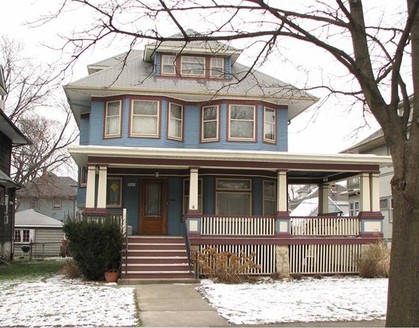 |
.jpg) |
Joe Tinker was the starting shortstop for the Chicago Cubs from 1902 to 1912. He was a speedy runner, stealing an average of 28 bases a season and even stealing home twice in one game on July 28, 1910. He also excelled at fielding, often leading the National League in a number of statistical categories (including four times in fielding percentage). During his decade with the Cubs, they went to the World Series four times, winning in 1907 and 1908. Despite being just an average hitter, Tinker had a good amount of success against fellow Hall of Famer Christy Mathewson. He hit a game-winning double off of Mathewson in the 1908 National League playoff game - a replay of the Merkle game - that clinched the pennant for Chicago. Tinker is perhaps best known for the "Tinker to Evers to Chance" double play combination in the poem "Baseball's Sad Lexicon," written by the New York Evening Mail newspaper columnist Franklin Pierce Adams in July 1910. Yet several years earlier, on September 14, 1905, Tinker and Evers had engaged in a fistfight on the field because Evers had taken a cab and left his teammates behind in the hotel lobby. Tinker and Evers did not speak to one another again for 33 years, until they were asked to participate in the radio broadcast of the 1938 World Series (Cubs versus Yankees), where they were tearfully reunited. Tinker's incessant salary demands got him traded to the Cincinnati Reds in 1912. After a year playing and managing the Reds, Tinker jumped to the Federal League. He managed the Chicago Whales for two years and won the pennant in 1915, but the league folded after the season. He rejoined the Cubs briefly in 1916. Tinker ended his career in Florida, managing, scouting, and dabbling in real estate. He ran the Orlando Gulls in the Florida State League. Tinker Field, a stadium in the shadow of the Citrus Bowl, is named for him. Tinker died in Orlando, Florida on his 68th birthday of complications from diabetes.
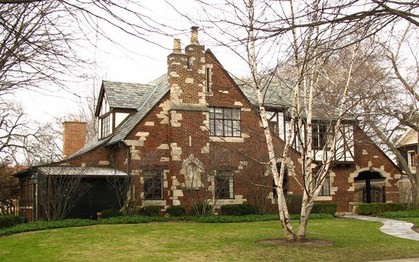 |
 |
Leonard Japp, Sr. began selling pretzels from a truck in 1927. The business grew to feature a potato chip recipe made by Japp’s wife, Eugenia. After the Wall Street Crash of 1929, Japp found a new business partner and began selling the chips under the brand name “Mrs. Japp’s Potato Chips”. The 1941 Attack on Pearl Harbor and the subsequent anti-Japanese sentiment, however, led to a negative connotation towards the word “Jap” in the United States. The chips were consequently rebranded to “Jays Potato Chips” to avoid the sound-alike name, and the company became Jays Foods, Inc. Jays Foods remained a family-owned company until 1986, when the company was sold to Borden, Inc. In 1994, Jays Foods was re-acquired by the Japp Family. In 2004, Jays Foods was purchased by Willis Stein & Partners, a Chicago private-equity firm, and, together with another snack company acquired by Willis Stein & Partners, Lincoln Snacks Company, assigned a parent company, Ubiquity Brands. Jays Foods filed Chapter 11 bankruptcy on October 11, 2007, the second time in four years, and permanently closed its Chicago manufacturing plant on December 5, 2007. On December 5, 2007 the remaining assets of Jay's were acquired by Snyder's of Hanover who have said they will continue to manufacture and distribute Jays products throughout the Midwest. Snyder's will continue to operate Jays Chicago warehouse and distribution center and its Jeffersonville, Indiana manufacturing facility.
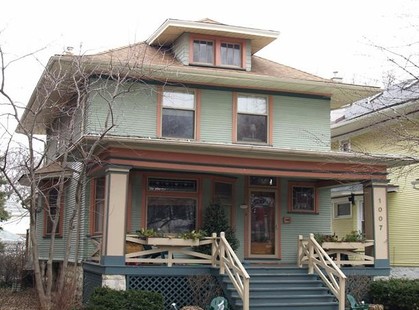 |
 |
Raymond Albert "Ray" Kroc (October 5, 1902 – January 14, 1984) was an American businessman who joined McDonald's in 1954 and built it into the most successful fast food operation in the world. Kroc was included in Time 100: The Most Important People of the Century, and amassed a fortune during his lifetime. He owned the San Diego Padres baseball team from 1974 until his death in 1984. Kroc was born to parents of Czech origin in Oak Park, near Chicago, on October 5, 1902. He grew up and spent most of his life in Oak Park, Illinois. He lived at 1007 Home from 1902 through 1919. During the First World War he lied about his age and became a Red Cross ambulance driver at 15. During the war, Kroc served in the same regiment as Walt Disney. Between the end of the war and the early 1950s he tried his hand at a number of trades including paper cup salesman, pianist, jazz musician, band member and radio DJ at Oak Park radio station WGES.
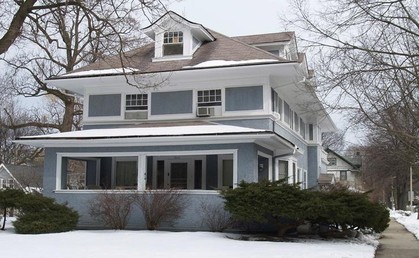 |
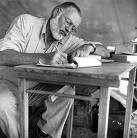 |
Ernest Hemingway's boyhood home is up for sale.
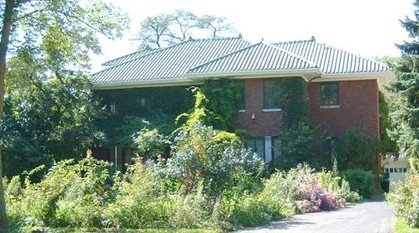 |
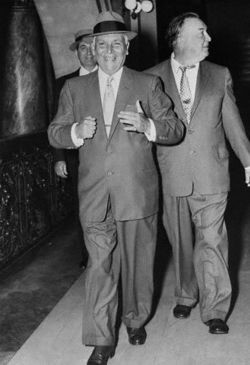 |
Paul Ricca, also known as "The Waiter" (1897 – October 11, 1972), was a Chicago mobster who served as the nominal or de facto leader of the Chicago Outfit for forty years. While in Cuba, Ricca met Joseph "Diamond Joe" Esposito, a Chicago bootlegger and restaurant owner. Esposito brought Ricca to Chicago and put him to work smuggling whiskey from Cuba and moonshine liquor from Kentucky. Sensing Ricca's potential, Esposito soon appointed him as maitre d' at the Bella Napoli, Esposito's restaurant. This job was the source of Ricca's nickname "The Waiter". Ricca rose very quickly in the gang ranks, frequently serving as Capone's emissary to the East Coast gangs. The two soon became good friends; in 1927, Capone served as the best man at Ricca's wedding. In 1929, Capone and Ricca attended the Atlantic City Conference in Atlantic City, New Jersey, the first meeting of all the major criminal gangs in the United States. In 1930, Capone sent Ricca to New York City to serve as his emissary in peace talks aimed at ending the Castellammarese War between the New York gangs. With the establishment of the National Crime Syndicate in 1931, Ricca's prestige and visibility continued to rise. In 1932, Capone was convicted of tax evasion and sent to prison. Nominally, Frank "The Enforcer" Nitti succeeded Capone as boss of the Chicago Outfit with Ricca as underboss. However, Ricca held the real power, if not by 1932 then almost certainly by 1939. Ricca frequently overruled Nitti's orders by saying, "We'll do it this way. Now let's hear no more about it!" In addition, the leaders of the emerging Syndicate, including Lucky Luciano, dealt with Ricca, not Nitti, as boss of the Outfit. In the early 1940s, Nitti convinced Ricca and the rest of the Outfit leadership to participate in a labor racketeering and extortion scheme aimed at the movie studios in Los Angeles, California. Chicago mobster Johnny Roselli ("Handsome Johnny") gained control of the Projectors Union and threatened the studios with strikes and other labor problems. To avoid labor unrest, RKO, Paramount, MGM and 20th Century Fox paid several hundred thousand dollars to the Outfit. However, two Outfit men were arrested for extortion and agreed to testify against the Outfit leadership. In March 1943, Ricca, Nitti, and other mob leaders were indicted for extortion. On March 18, 1943, Ricca and the Outfit leadership met with Nitti and demanded that he plead guilty to all the extortion charges as part of a deal to save them from prison. Terrified at the prospect of prison due to his severe claustrophobia, Nitti shot himself to death the next day. Ricca now became boss of the Outfit in name as well as fact, naming enforcement chief Tony Accardo as underboss. Ricca and Accardo would together run the Outfit for the next 30 years. As the 1950s began, Ricca started passing more of the day-to-day operation of the Outfit to Accardo. However, in 1957 Ricca suddenly told Accardo that he wanted Sam Giancana, a Ricca protege, to take Accardo's position. Accardo was facing tax evasion charges and Ricca allegedly wanted him to disappear from public view. Although unhappy about the demotion, Accardo accepted it, joining Ricca in semi-retirement. However, it was understood that Giancana had to get Accardo and Ricca's approval for all major transactions, particularly hits. By staying in the background, Ricca and Accardo survived far longer than Capone ever had. As Ricca aged, Accardo began to make more of the high level decisions, ultimately pushing Giancana out in favor of Sam Battaglia in 1966. Ricca died of a heart attack on October 11, 1972.
.jpg) |
.jpg) |
Edwin Elijah Perkins (January 8, 1889 – July 3, 1961), born in Lewis, Iowa, U.S., invented the powder drink mix Kool-Aid in 1927 in Hastings, Nebraska after his family had moved there from Iowa in 1893. As a young man he worked with products like Jell-O, which was sold in his father's general store in Hendley. When Perkins came to Hastings at age thirty-one in 1920, his principal interests were patent medicines and household products. With that background, he began producing a line of over 125 "Onor-Maid" items which were sold door-to-door and by mail. One of the most popular was "Fruit-Smack," a fruit flavored liquid concentrate. By 1927, he had developed a powdered soft drink mix called Kool-Ade, which he packaged in envelopes and sold in grocery stores. Demand for this product was so great that it soon had international sales. Before long, the Perkins Products Company was focusing entirely on Kool-Ade, and in 1931 Mr. Perkins relocated to River Forest . By 1934, the name was changed to Kool-Aid. The company was sold to General Foods in 1953. Kool-Aid went on to become a household name and made Edwin Perkins a wealthy man.
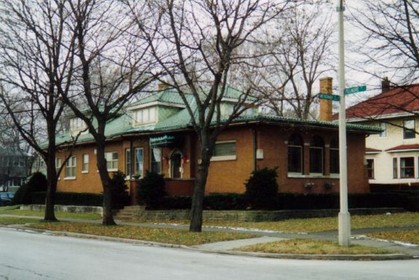 |
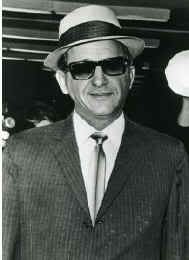 |
Salvatore Giancana (born Salvatore Giangana; June 15, 1908 – June 19, 1975), better known as Sam Giancana, was a Sicilian-American mobster and boss of the Chicago Outfit from 1957-1966. Among his other nicknames were, "Momo", "Mooney," "Sam the Cigar," and "Sammy." It is widely reputed, and partially corroborated by the Church Committee Hearings, that during the Kennedy administration, the Central Intelligence Agency (CIA) recruited Giancana and other mobsters to assassinate Cuban president Fidel Castro. Giancana reportedly said that the CIA and the Cosa Nostra were "different sides of the same coin." The association between Giancana and JFK is indicated in the "Exner File" written by Judith Campbell Exner. Exner was reputed to be mistress to both Giancana and JFK, and some allege she may have delivered communications between the two regarding Fidel Castro. Giancana's behavior was too high profile for Outfit tastes and attracted far too much federal scrutiny. He also refused to cut his underlings in on his lavish profits from offshore casinos in Iran and Central America. Both of these factors resulted in much bitterness among the Outfit's rank-and-file. As a result, Giancana was deposed as day-to-day boss by the still in control Accardo and replaced by Joseph "Joey Doves" Aiuppa. After about seven years of exile inside a lavish villa in Cuernavaca, Mexico, Giancana was arrested by Mexican authorities and deported to the United States. Upon his return to the U.S., Giancana joined the Federal Bureau of Investigation as a witness in the prosecution of organized crime in Chicago. The police detailed officers to guard his house at 1147 S. Wenonah, Oak Park, Illinois. However, on the night of June 19, 1975, someone recalled the police detail. A gunman later entered Giancana's kitchen and shot him in the back of the head as he was frying sausage and peppers. After Giancana fell to the ground, the gunman turned him over and shot him six more times in the face and neck. Investigators suspected that the murderer was a close friend whom Giancana had let into the house. One reason for this suspicion was that Giancana, due to his heart problems, could not eat spicy foods. Therefore, he might have been cooking for a friend. Giancana was killed shortly before he was scheduled to appear before a U. S. Senate committee investigating supposed CIA and Cosa Nostra collusion in plots to assassinate President John F. Kennedy.
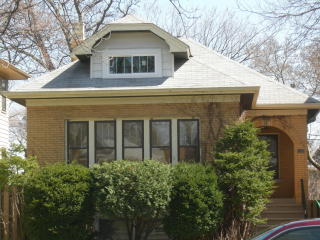 |
 |
James Dewar, manager of the Schiller Park Bakery in Illinois (a Hostess Cake Company), invented the Twinkie in 1931. The idea for Twinkie came to Dewar when he noticed the baking pans used to make Hostess' Little Shortbread Fingers sat around unused most of the year. They were only used in the summer, when strawberries, an essential ingredient in Hostess Little Shortbread Fingers, were in season. Dewar used the pans to bake a sponge cake, which he filled with a banana creme filling, and the Twinkie was born. James Dewar came up with the name for his new banana-creme filled sponge cake after seeing a billboard advertisement for "Twinkle Toe Shoe Company." The word "Twinkies" came to his mind and the name stuck. Twinkies quickly became a success. Tasty and inexpensive, at the time costing five cents for a package of two, the treat was a hit during the rough economic times of the Depression era. The inventor of Twinkies, James Dewar, continued to work for Hostess Cake Company until he retired in 1972. Hostess appropriately nicknamed Dewar "Mr. Twinkie." James Dewar remained proud of his Twinkie invention throughout his life. He had a great love for his snack cake creation. According to the Historical Society of Oak Park and River Forest, Dewar ate a minimum of three Twinkies a day. Dewar passed away in 1985 at the age of 88. He will always be remembered as Mr. Twinkie.
Rocco DeGrazia, 1040 N. Elmwood
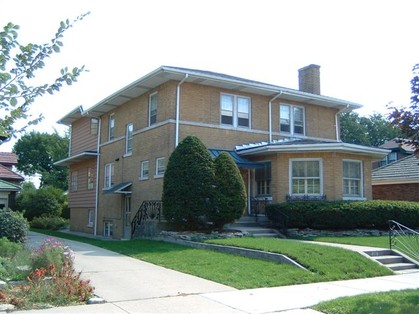
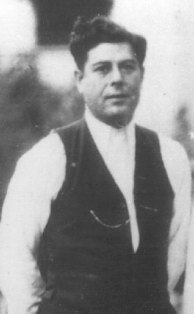
Capone gangster Rocco DeGrazia claimed to be 23 when he entered the U.S. and most newspapers accepted 1900 as his birth date. (Probably 1897). He arrived from Italy in 1923. In July, 1932, he suffered serious spinal injuries in a wreck two miles west of Bloomingdale, Illinois, and was hospitalized in Elgin, where he refused to discuss the machine gun in the back seat of his car or the police star he was wearing at the time. (With him was gangster Anthony "Tony the Mouth" Bagniola, and they had crashed into a farmer's vehicle while driving at high speed to a roadhouse, partly owned by DeGrazia that had just been raided. He started as a driver for the Capone mob. Later he makes his way up the ladder as gunman and gambling chief. DeGrazia was reputed to be in charge of accommodations for the St. Val. massacre shooters. In 1934, Rocco, then living at 1040 North Elmwood in Oak Park, threatened to kill IRS agents until he learned who they were. He and his brother Nick, who was residing in Maywood, were indicted on July 27, 1934, for failure to pay income taxes during 1929 and 1930 on some eighteen handbooks in Melrose Park, for which he paid $1,200 a month protection. On February 5, 1935, he pleaded guilty and was sentenced to eighteen months in Leavenworth, plus a fine of $1000. In 1946 Rocco and his brother Andrew, partners in a tavern called the Lumber Gardens, were picked up and questioned for allegedly threatening a Melrose park pharmacist over opium and morphine, which they were demanding to settle the druggist's gambling debts. Rocco surrendered to authorities on March 19, 1946, disposition of that case unknown. (Rocco had insisted that the drugs were for doping horses, although his brother was believed to be addicted. Andrew's wife later committed suicide with a gun, and Andrew himself ended up, in May of 1958, falling asleep at the table and choking to death on Italian sausages.)
In his later years, DeGrazia dropped in stature, becoming a minor henchman of Sam Battaglia. His sole remaining holding was his lavish gambling club, the Casa Madrid at 171 North 25th Street in Melrose Park, which also doubled as his residence. On September 23, 1961, Rocco was arrested at the Casa Madrid and safes were seized, but the disposition of the case is unknown. After many failed attempts at revoking his liquor license and charging DeGrazia with running a gambling establishment, the club finally closed, but Syndicate bosses continued to meet in the basement there as late as 1969.
.jpg) |
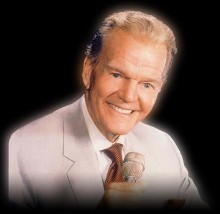 |
Paul Harvey Aurandt (September 4, 1918 – February 28, 2009), better known as Paul Harvey, was an American radio broadcaster for the ABC Radio Networks. He broadcast News and Comment on weekday mornings and mid-days, and at noon on Saturdays, as well as his famousThe Rest of the Story segments. His listening audience was estimated, at its peak, at 24 million people a week. Paul Harvey News was carried on 1,200 radio stations, 400 Armed Forces Network stations and 300 newspapers. His broadcasts and newspaper columns have been reprinted in the Congressional Record more than those of any other commentator. The most noticeable features of Harvey's folksy delivery were his dramatic pauses and quirky intonations. His success with sponsors stemmed from the seamlessness with which he segued from his monologue into reading commercial messages. He explained his relationship with them, saying "I am fiercely loyal to those willing to put their money where my mouth is." If you would like to read more,